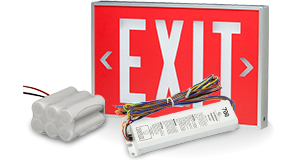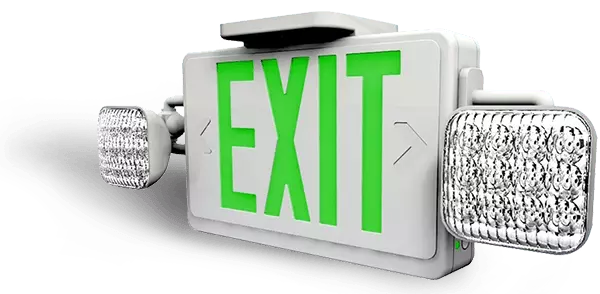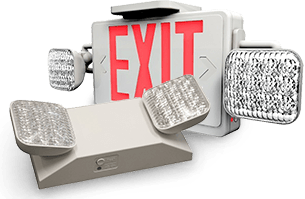Exit Signs
Emergency Lights
Specialty Signs
Accessories
Featured Fact
Our best-selling sign
MICROS® Exit is an impact-resistant LED exit sign designed with thermoplastic housing, less than 2 watt power consumption, and is damp location rated.
Shop MES Now
Resource
Do Battery Powered Exit Signs Exist?

Unfortunately, battery powered exit signs do not exist. Per 7.10.9.2 of the Life Safety Code, any sign with a battery is required to have an electrical connection to keep the battery charged in the event of a power failure. Where does that leave you? The good news is non-electrical solutions do exist, and one of the most popular types is commonly known as a tritium exit sign. You can save time and money by installing these self-luminous signs… Read more
Resource
Self Powered Exit Signs

Exit signs are tremendously important products to have installed in your facility. Most buildings these days boast a number of safety features, including shock-absorbing struts and fire-resistant construction materials, but there remains no substitute for human presence of mind. Quality exit signage can quite literally mean the difference between lives lost and a disaster averted with ease. These days exit signs come in a wide variety of options… Read more
Resource
How to Test The Functionality Of A Combination Exit Sign with Lights

Check the AC electrical connection from the junction box/wall to the unit. There should be 3 wires, two of which will be connected and one which should be capped off. In most combination exit sign models the wires will be black (120v), red (277v), and white (common). It is important to know what voltage electricity your facility operates on, 120v or 277v. Make sure that the correct voltage connection is made between the unit… Read more
Need a question answered ASAP?

How do I test exit signs or emergency lights? Why is my exit sign buzzing? Do you ship internationally?
Keeping on top of all emergency egress requirements and testing can be a challenge. But, don’t worry. We got you covered. Search our FAQ’s and find the answers you need. You’ll uncover actionable advice and best practices for installation, testing, satisfying federal and state requirements, and more.
FAQ





